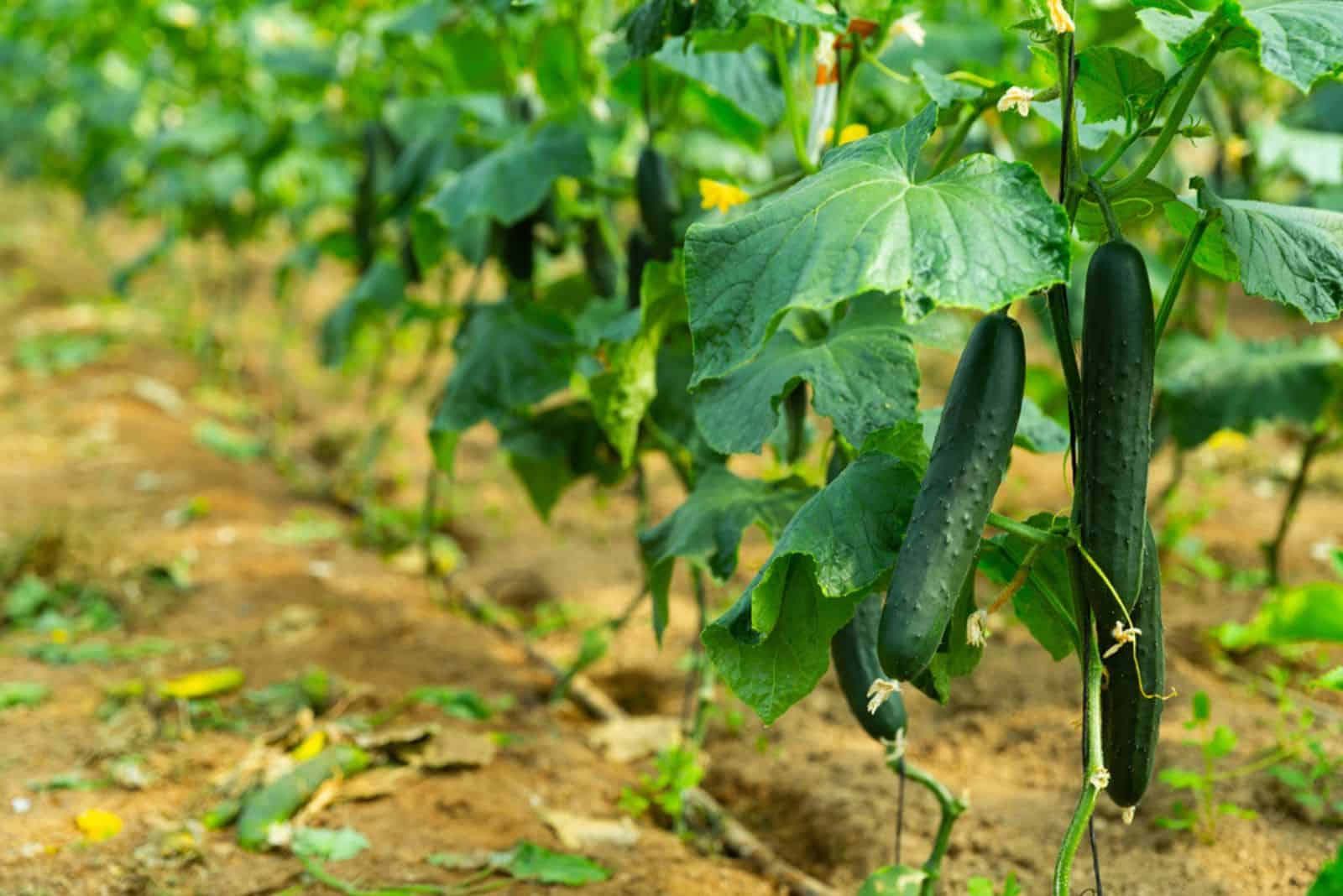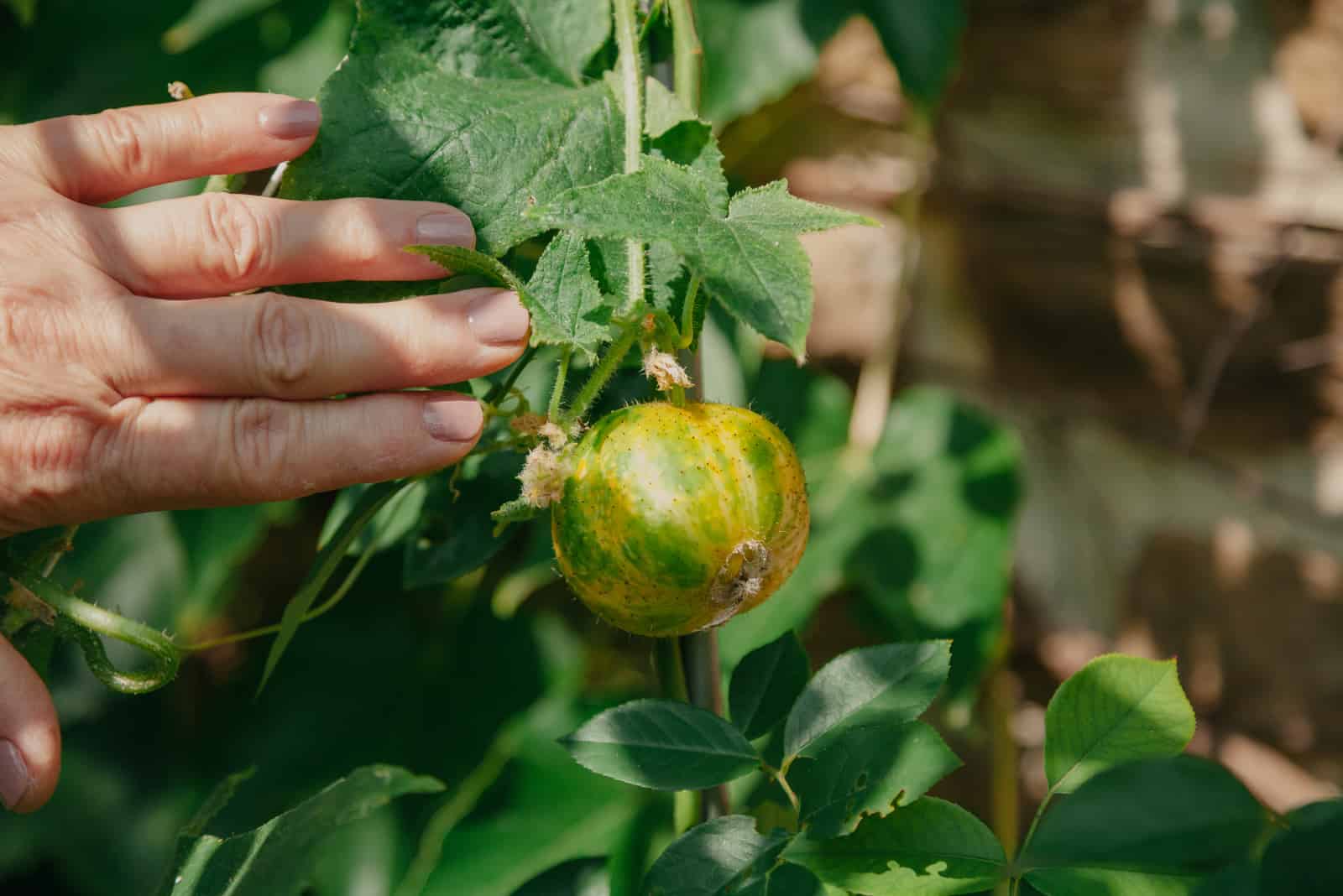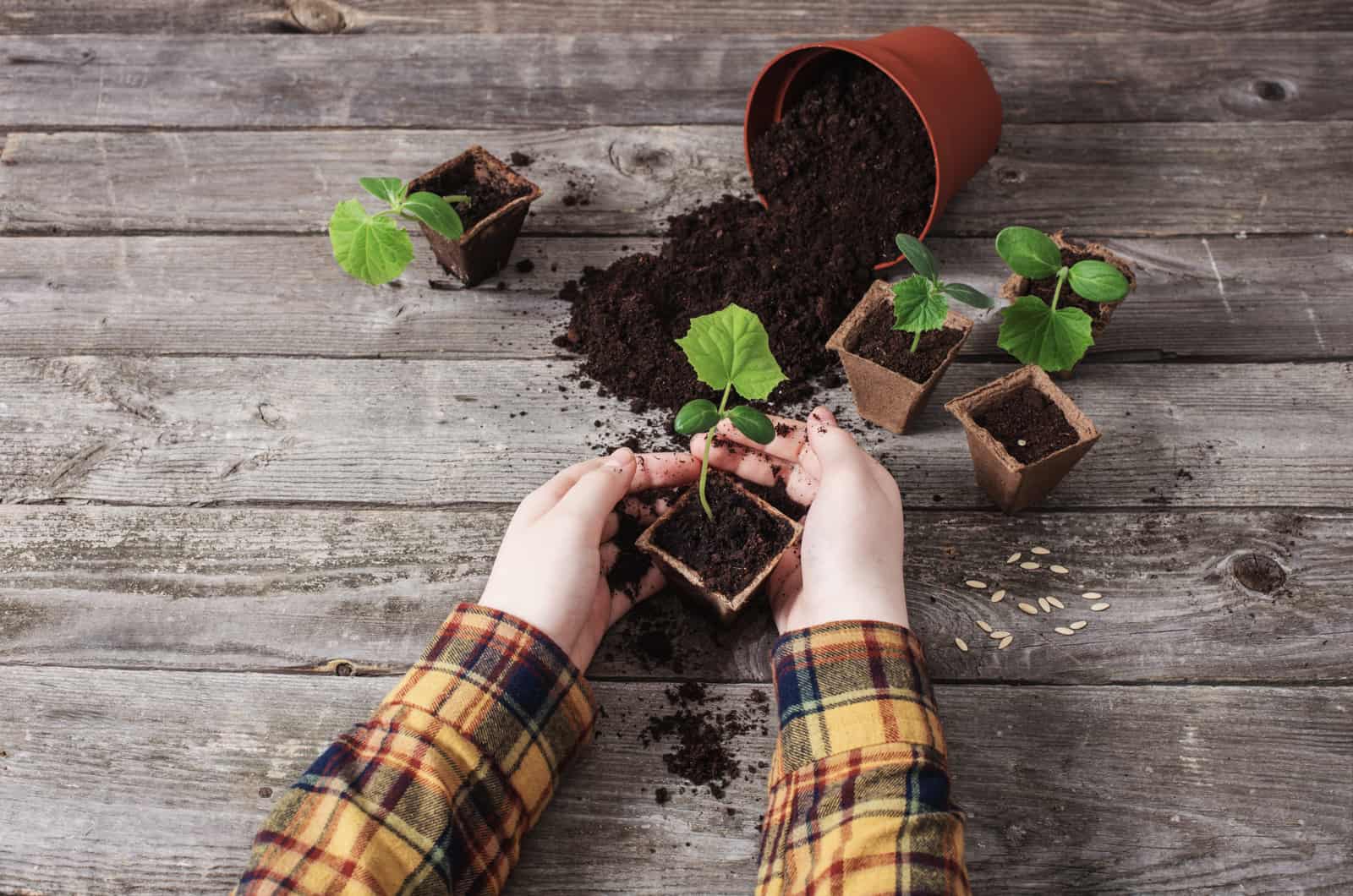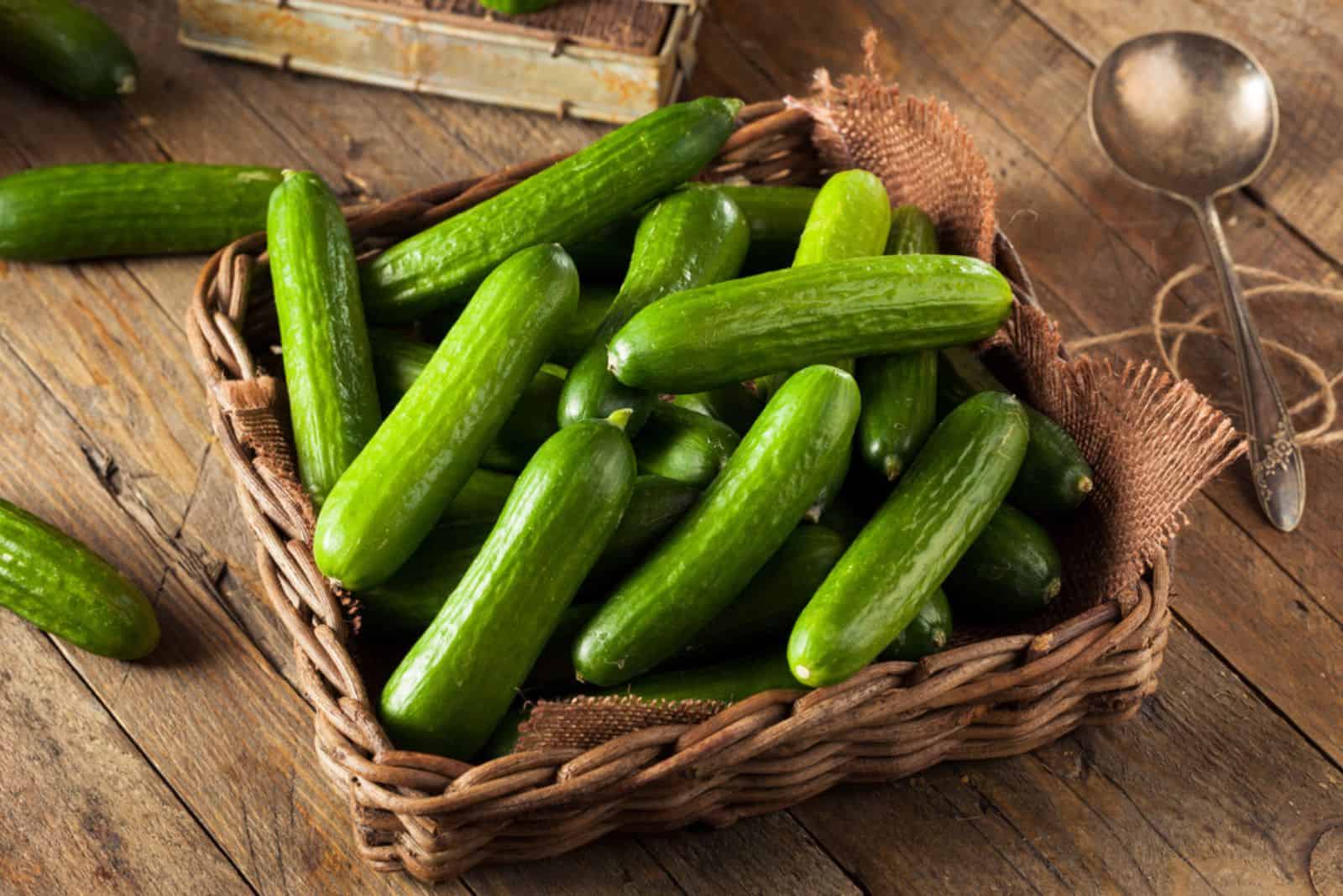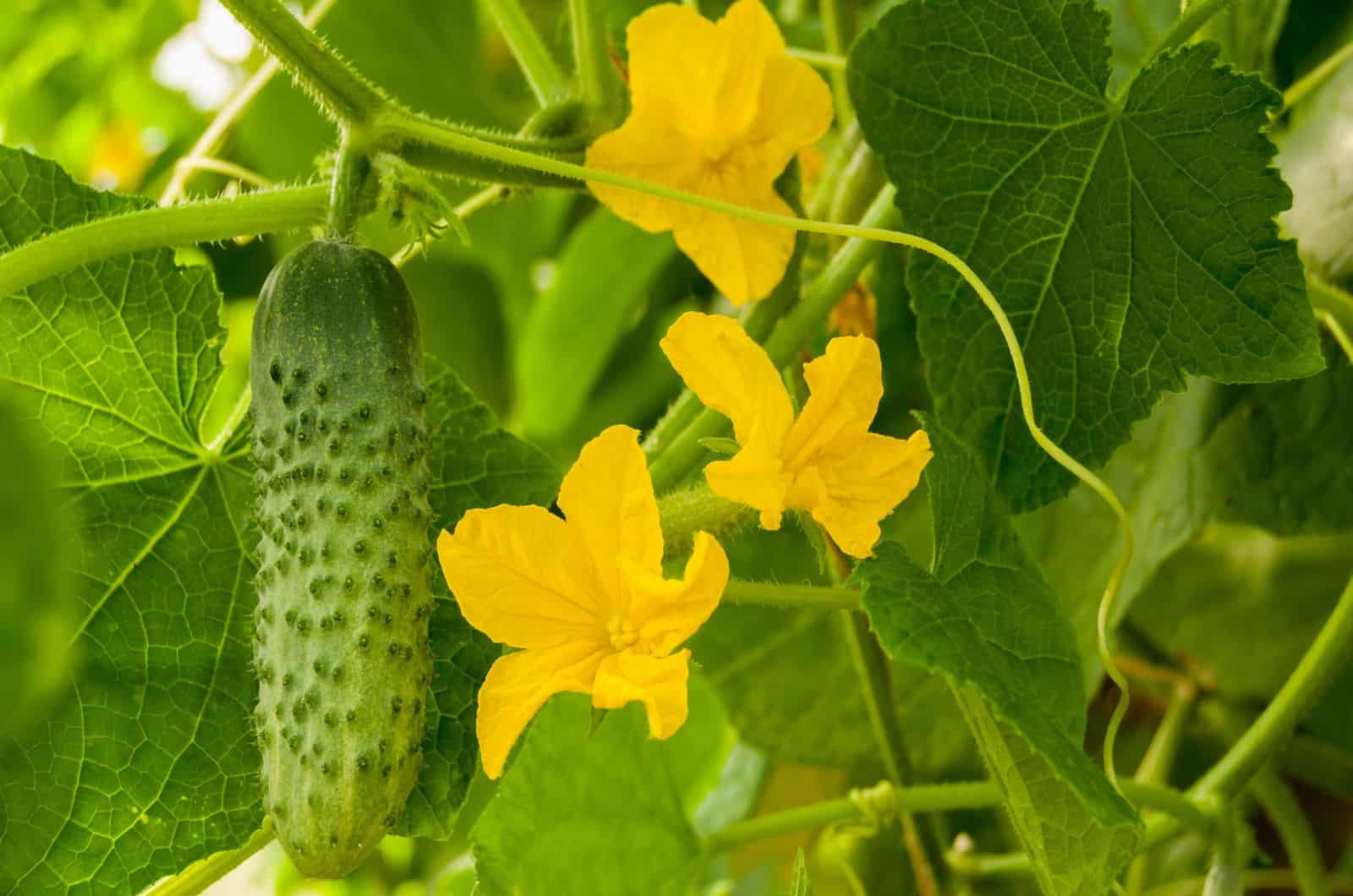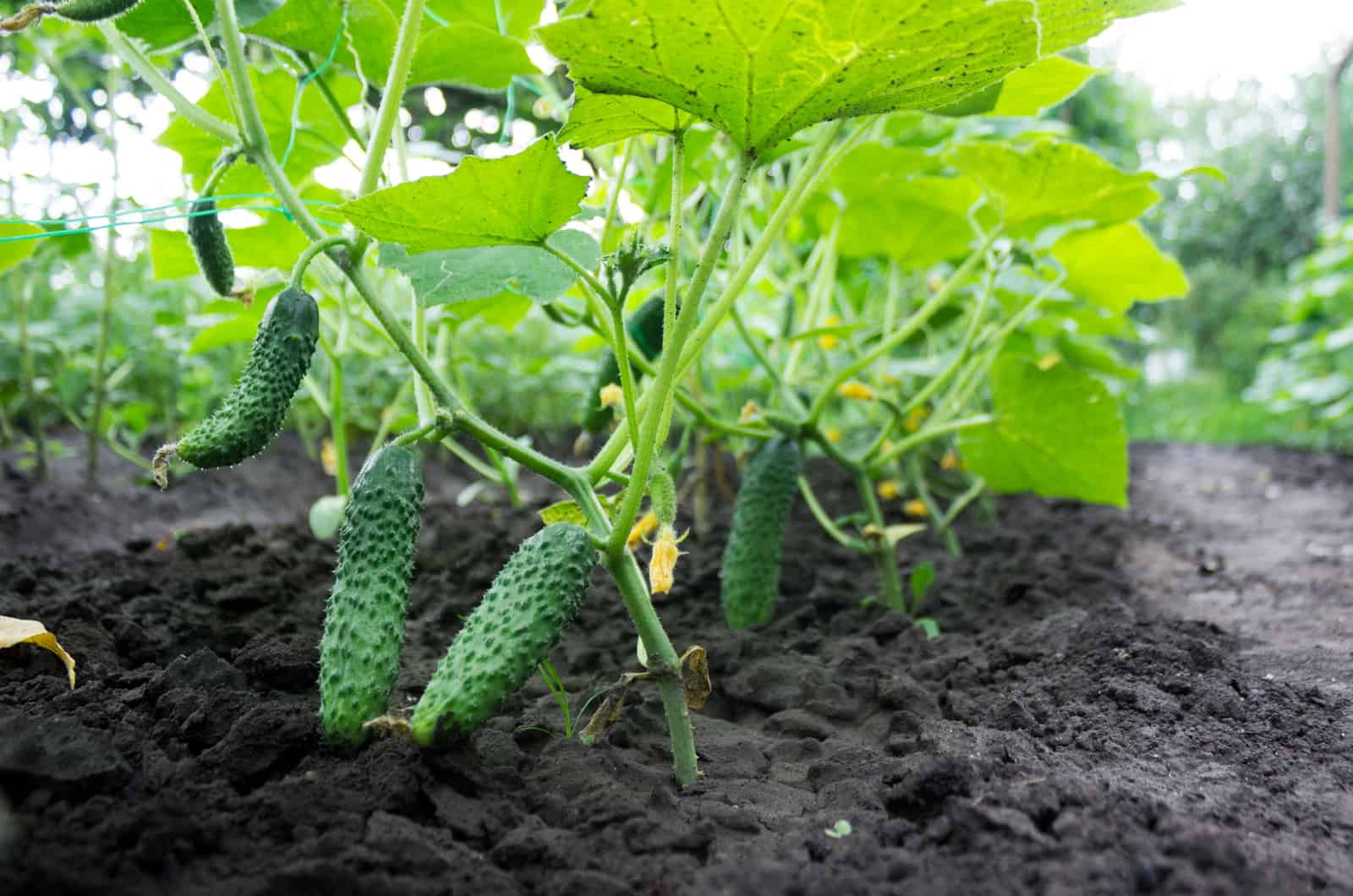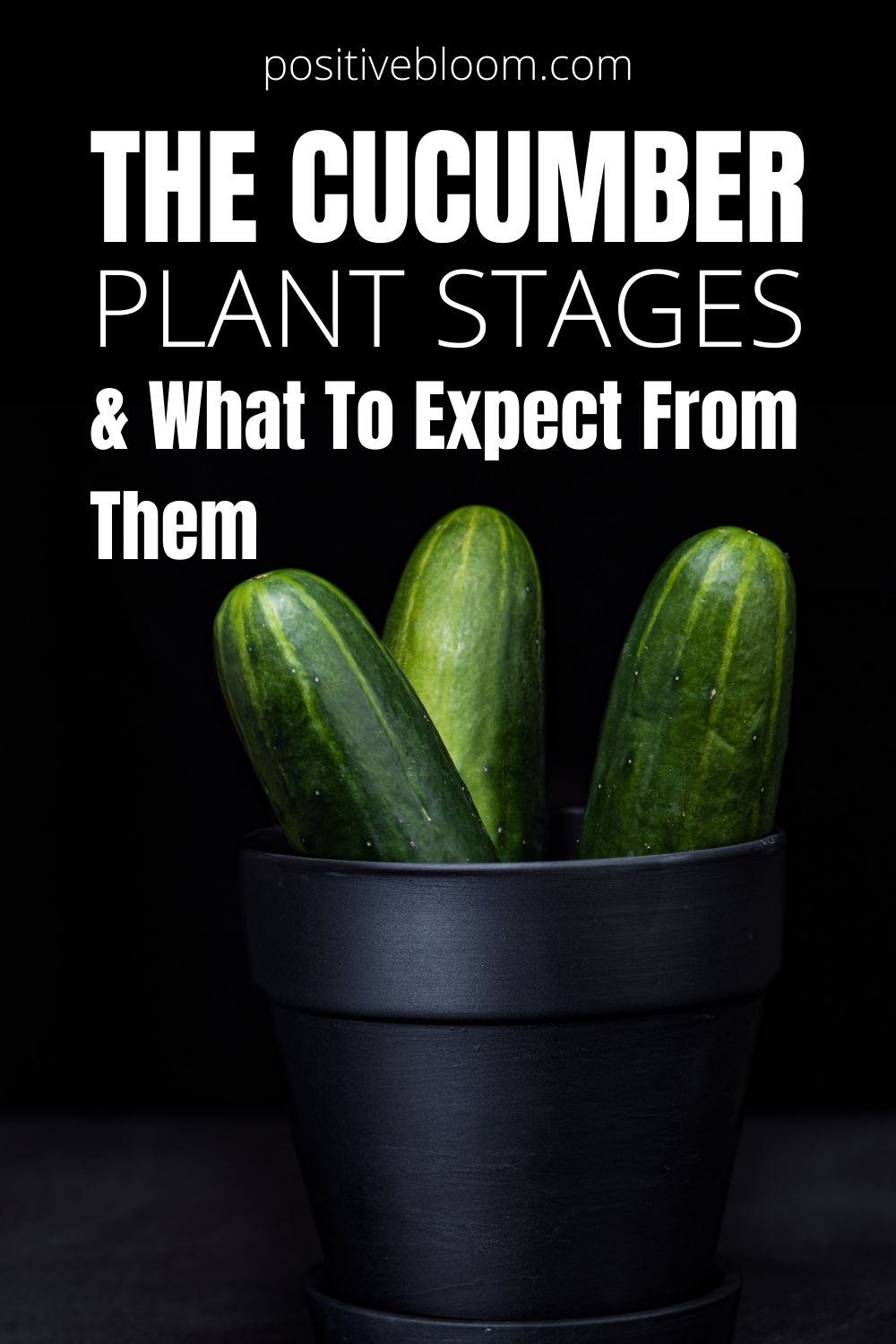Cucumbers are an indispensable ingredient in many delicious salads, and they are also the most commonly grown plants in vegetable gardens.
Although we may think of these fruits (yes, they’re fruits) as green and long, many cucumber varieties differ in shape, size, and color.
In this article, I’ll tell you more about the cucumber plant stages, the features of each stage, and what to expect.
Of course, you must pay attention to the conditions you ensure during each growth stage, but don’t worry; you’ll find some awesome care tips in this article.
First, here’s some basic info about cucumbers:
[table id=486 /]
Let’s get started!
Cucumber Plant Stages
Why is it important to know the cucumber growth stages? It’s because knowing what your cucumber plant looks like at each stage will let you detect if something goes wrong.
Cucumbers are relatively easy to maintain, and they’re grown in different hardiness zones.
The cucumber growing stages include germination, the seedling stage, flowering and fruiting, and the harvesting stage.
Let’s learn more about each stage!
Germination
Before growth shows above the soil line, germination needs to be completed below the soil line.
The first cucumber growth stage is seed germination, and it’s characterized by the development of roots and shoots. The seed pierces its outer shell, and new growth occurs.
The time needed for cucumber seeds to germinate mainly depends on soil temperatures. For example, if the temperature is below 80 degrees Fahrenheit, cucumber seeds will need about ten days to germinate.
On the other hand, if temperatures are above 80 degrees Fahrenheit, the seeds might germinate in just three days.
Be careful with temperatures because the seeds of this fruit can’t germinate if they’re lower than 60 degrees Fahrenheit.
Here are some tips for germinating seeds.
Tips For Planting Cucumber Seeds
First, decide on the perfect spot for planting your cucumbers. Remember that they need to receive at least 6 hours of direct sunlight each day and the soil must be nutrient-rich.
The seeds should be sown directly from the seed packets. Bury the seeds an inch below the soil surface and make sure the spacing between the rows is about 3 feet. If you grow cucumbers as fruit vines, seeds should be approximately one foot apart.
If you live in a colder climate, you can place row covers to protect cucumbers.
Once the seeds germinate, your cucumbers will enter the second growth stage.
Seedling Stage
The next growth stage of cucumbers is the seedling stage. This stage is characterized by forming the first set of cucumber leaves, which are referred to as cotyledons.
True leaves start forming, and cucumbers rely on photosynthesis for nutrition. The number of leaves increases and the vines grow longer.
Cucumber vines now need support, so it would be best if you attached them to a trellis.
The vines should be about a foot long before you use loose ties to secure them to a trellis or similar structure so they don’t break the delicate vines.
If you started the seeds indoors, you’ll need to transplant cucumber seedlings about three weeks after planting. Other signs that your cucumbers are ready for transplantation include the formation of at least two true leaves and two cotyledons, which should be dark green in color.
Take the seedling outdoors for a couple of hours to harden in order to avoid transplant shock.
Flowering And Fruiting
Most varieties of cucumbers produce both male and female flowers.
Usually, male flowers begin to blossom a few weeks before female blooms do and they eventually fall off the vine.
Male flowers have a sticky tube in the middle that is covered in pollen. At the same time, the central ovary is present in female cucumber flowers. Cucumber flowers are bright yellow in color.
Pollination is an essential part of the cucumber growth cycle.
If your cucumber is pollinated, it will start producing fruit. The most common indicators of successful pollination are flowers falling off, female pistils dying, and fruit development.
You can attract pollinators to your garden for this, or do it yourself by using a paintbrush to move pollen from male to female organs.
Your cucumbers will need a lot of water and nutrients for fruit production. However, be careful not to overwater the plant as it could cause the cucumber leaves to turn yellow.
Mulch will protect cucumber roots from cooler temperatures, and it will also ensure more nutrients.
Harvesting Stage
It’s harvest time! This is the last stage of the cucumber life cycle. The time needed for your cucumber to be ready for harvest depends on the cultivar. Generally, it takes from 50 to 70 days for cucumbers to mature.
It’s difficult to tell if cucumber fruits are ready for harvest. The best idea would be to harvest the fruits before the cucumber skin turns yellow. Of course, this does not apply to yellow cucumber varieties.
Don’t harvest your cucumbers too late because their skin becomes rough, and they have a bitter taste. Ripe cucumber fruits are typically light green, whereas dark green fruits are overripe.
When harvesting cucumbers, snip them from their long vines; pulling them off will damage the vines.
Pickling cucumbers are ready to be picked once their fruits measure approximately 3 to 4 inches long. The harvest lasts from 7 to 10 days on average.
On the other hand, slicing cucumbers are ready to be picked once their fruits measure 7-8 inches long, and the harvest lasts for a month to a month and a half.
Best Types Of Cucumbers To Grow In Your Garden
If you decide to grow cucumbers in your garden, you can choose between vining and bush varieties.
Let’s first discuss vining types. These varieties need a lot of space to grow; if your garden is pretty large, these varieties will thrive.
Some of the most common vining cucumbers are round cucumbers, such as the Lemon cucumber and Apple Crystal cucumbers.
Regarding bush varieties, they won’t take up too much space and are perfect for growing in containers.
I recommend Pick a Bushel for pickling and Salad Bush for slicing.
You can promote cucumber plant growth by growing them in greenhouses. This way, you’ll control the environment and ensure the best growing conditions.
FAQs
What is the function of a cucumber?
Cucumbers have a lot of health benefits. First, they are low in calories, making them perfect for weight loss diets. These fruits are rich in nutrients and antioxidants, which means that they can reduce the risks of autoimmune diseases and cancer. Cucumbers’ 96% water content will help you stay hydrated and fulfill your daily fluid requirements.
What is a cucumber plant’s lifespan?
Cucumber plants are cultivated as annuals, which means they can’t grow back after the harvest. Their lifespan is approximately 70 days and they die after. However, the lifespan depends on weather conditions and cultivars.
Wrapping Up
Growing cucumbers and watching them go through all their stages of growth is a truly unique experience.
The cucumber plant stages include seed germination, a seedling stage, blooming and fruiting, and a harvesting stage.
Remember that ensuring the right conditions for your cucumbers is the only way for them to reach maturity.
Before you start growing cucumber plants, research the perfect variety for your area, use our tips for planting, growing, and harvesting, and I’m sure you’ll get the tastiest fruits ever!
Until next time!
Like this post? Share or pin it for later!

